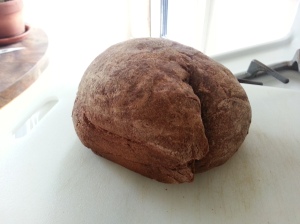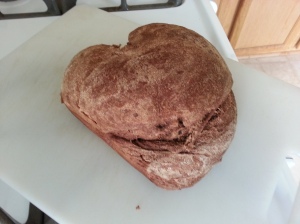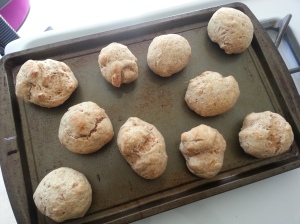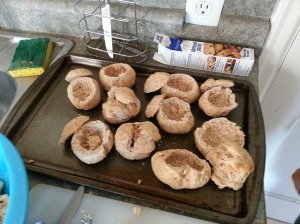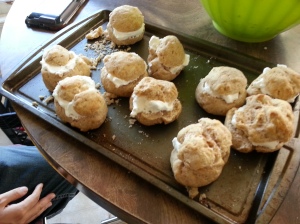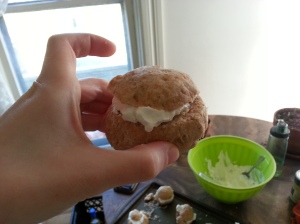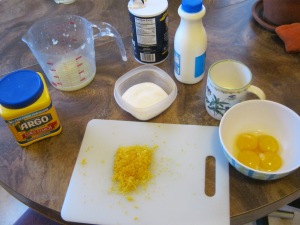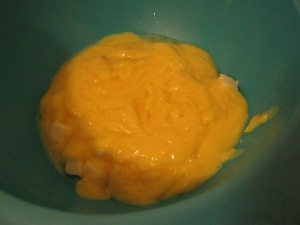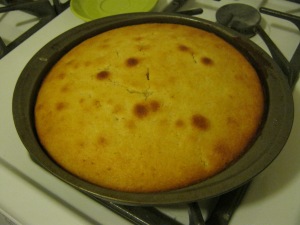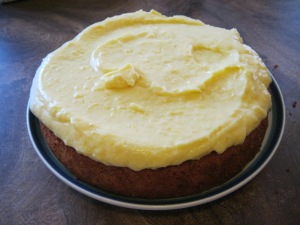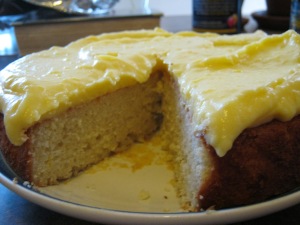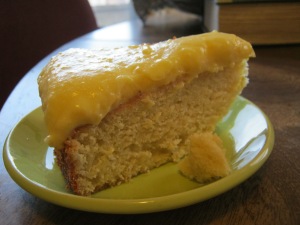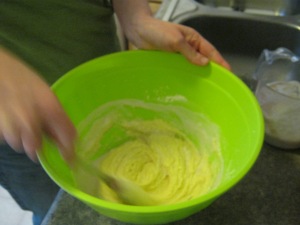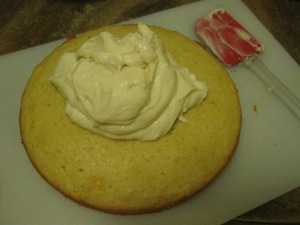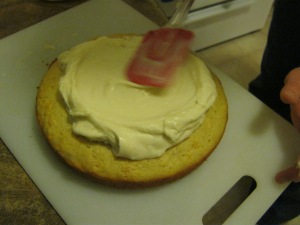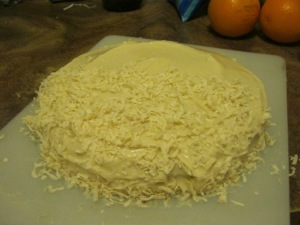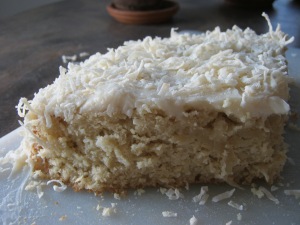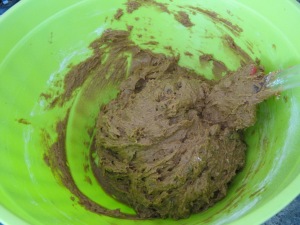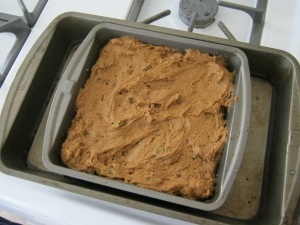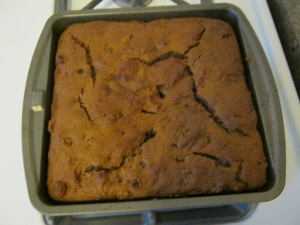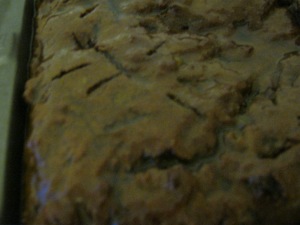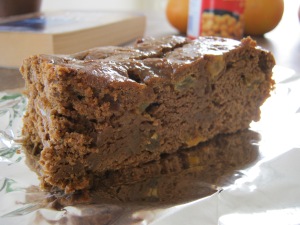I was in the mood for baking and wanted to try something completely different. So I tried rugelach, a traditional Jewish dessert. This is Baking With Julia‘s take on the dish, modified so it would be easier to cook in my kitchen.
The dough:
- 3 sticks butter, room temperature
- 12 ounces cream cheese, room temperature
- 1/2 teaspoon salt
- 1/4 cup white sugar
- 3 cups flour*
* You can use all-purpose flour. I find that half and half all-purpose and whole wheat flour works just fine and gives baked goods a nutty taste.
The filling:
- 2 cups dried apricots
- 1-2 tablespoons lemon juice
- 1 tablespoon rum (optional)
- 1/3 cup brown sugar
- 2-3 tablespoons cinnamon
The topping:
- 1 and 1/2 cups nuts of your choice (though I don’t recommend peanuts)
Beat together the butter, cream cheese, and salt with a mixer. Beat in the sugar. Switch to mixing with a spoon and gradually mix in the flour. Divide the dough in half and form each half into a rough brick shape (see below). Wrap each brick up tightly and put in the freezer for one hour.
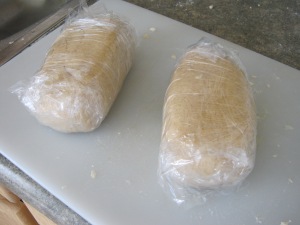
While the dough’s chilling, prepare the filling and the topping. For the filling, put the apricots in a saucepan and just cover with water:
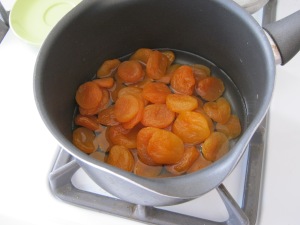
Stew the apricots on low heat until they’re just mushy, about 15 minutes. Take off the heat and add the lemon juice and rum. Mash the apricots into a paste. Set aside.
Mix the cinnamon and sugar and set aside.
For the topping, chop the nuts into large pieces. Set aside.
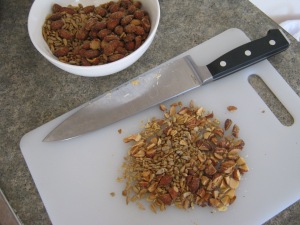
Once your dough’s chilled, you’re ready to assemble your rugelach. Work with one dough brick at a time. Roll the dough out until it’s a rectangle about 1/4″ thick. Cut the rectangle in half the long way.
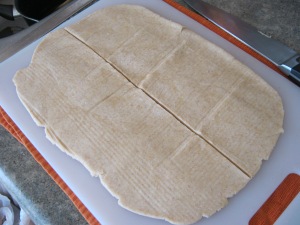
Spread each side with one quarter of the apricot pureé, then sprinkle with the cinnamon sugar. Then roll it up like a jelly roll.
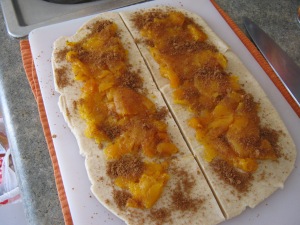
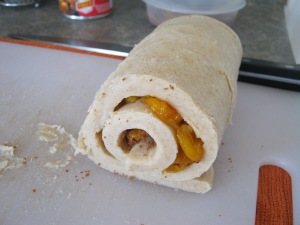
At this point, the rugelach are delicious raw. The dough doesn’t contain any raw eggs, either, so you don’t have to feel bad about making off with some of it. Wrap the rolls tightly in plastic wrap and put them back in the freezer for an hour. You’ll have four rolls total.
When you’re ready to bake the rugelach, work with one roll of dough at a time so it doesn’t get too soft. Slice the roll into disks of desired thickness (this will only affect the cooking time.) Put the rolls on a lined baking sheet. I can’t emphasize that enough.
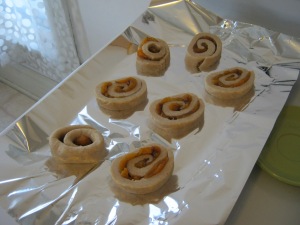
Sprinkle the disks with the chopped nuts, and if you want, more cinnamon sugar. Bake for 15-20 minutes.
Here’s what they look like when they’re done:
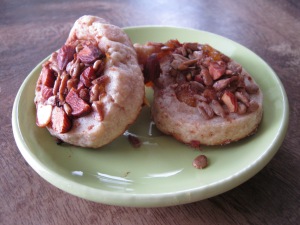
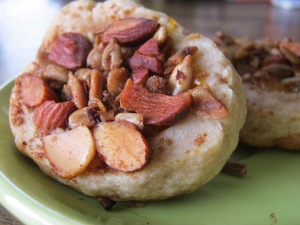
Somehow, these rugelach look nothing like the photo in Baking With Julia, and neither my rugelach nor Julia’s look like other pictures of rugelach from the Internet. But they were delicious.
 (Very loosely) adapted from this persimmon pudding recipe, mainly because I don’t like persimmon but I like pudding. The texture of this pudding is reminiscent of a Yorkshire pudding, almost cakelike. I like it. This version of the recipe is slightly sweet, so you can increase the sugar if you want.
(Very loosely) adapted from this persimmon pudding recipe, mainly because I don’t like persimmon but I like pudding. The texture of this pudding is reminiscent of a Yorkshire pudding, almost cakelike. I like it. This version of the recipe is slightly sweet, so you can increase the sugar if you want.












